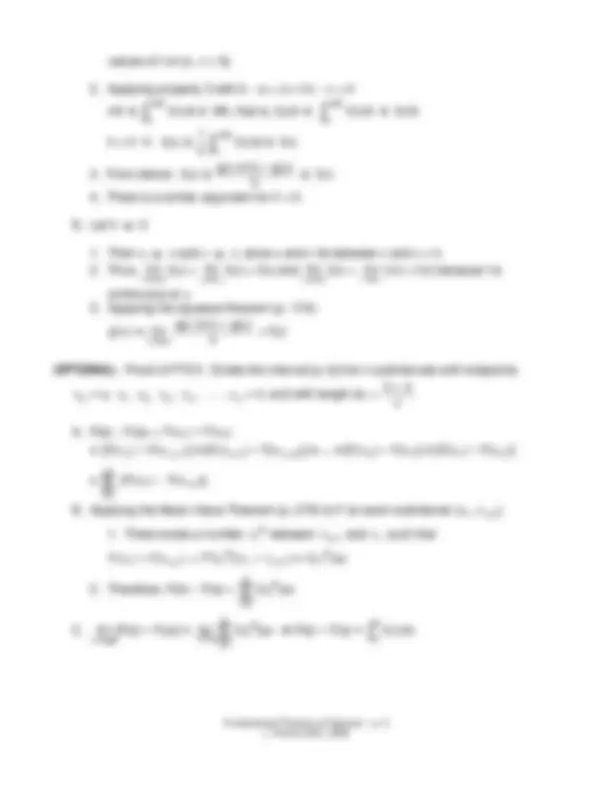




Study with the several resources on Docsity

Earn points by helping other students or get them with a premium plan


Prepare for your exams
Study with the several resources on Docsity

Earn points to download
Earn points by helping other students or get them with a premium plan
Community
Ask the community for help and clear up your study doubts
Discover the best universities in your country according to Docsity users
Free resources
Download our free guides on studying techniques, anxiety management strategies, and thesis advice from Docsity tutors
The fundamental theorem of calculus, which establishes the relationship between differentiation and integration. The theorem consists of two parts: part 1 explains how the integral of a function is the same as the definite integral of its derivative, while part 2 states that the derivative of the definite integral of a function is the function itself. The document also includes optional proofs for both parts of the theorem.
Typology: Study notes
1 / 4

This page cannot be seen from the preview
Don't miss anything!



Fundamental Theorem of Calculus ~ p. 1
Objective: Investigate the link between differentiation and integration as given by the Fundamental Theorem of Calculus
Two properties of integrals
b a
a b
a a
Comparison properties of integrals
b a
This can be interpreted as the area under the graph of a function where the area is entirely above the x-axis.
b a
b a
This means that a “bigger” function has a “bigger” integral.
b a
This means that the area under the graph of f is greater than the area of the rectangle with height m and less than the area of the rectangle with height M
Motivation for the fundamental theorem: let f be a continuous function on [a, b] and define
a function g by g(x) = where a x b.
x a
x a
x a
g(x)
x 3 2 1
x 1 t dt 3
Fundamental Theorem of Calculus ~ p. 2
In general, consider any continuous function f with f(x) ≥ 0.
x a
where x can vary from a to b.
′ = +^ − =
The fundamental theorem of calculus : Suppose f is continuous on [a, b]
Part 1. If g(x) = then
x
g (x)′^ = f(x)
If f is integrated and the result is then differentiated, we arrive back at the original function f.
Part 2. = F(b) F(a), where F is any antiderivative of f, that is,
b a
If we differentiate a function F, and then integrate the result, we arrive back at the original function F in the form of F(b) – F(a).
OPTIONAL : Proof of FTCI: Let g(x) =
x a
A. If x and (x + h) are in the open interval (a, b), then g(x + h) – g(x) = = =
x h a f(t) dt
x a
x x h a x f(t) dt f(t) dt
x a
x h a f(t) dt
B. Then, for h ≠ 0, g(x h) g(x) 1 h h
x h a f(t) dt
C. Assume that h > 0.
Fundamental Theorem of Calculus ~ p. 4
Examples using the Fundamental Theorem
x (^2) 0
x (^2) 0
x
3
0
3 2 3 3
x (^2) 0
x
x π =^ −^ π⇒^ g′^ ( )x^ =cosx
x cos t dt ⇒ g′ ( )x = f x( ) =cosx
Find the derivative of each of the following functions.
x
10 F(x) (^) x tan d
Solutions
x 1 f(t) ln t; then g(x) ln t dt g'(x) f(x) ln x
10 x f( ) tan ; then F(x) (^) x tan d 10 tan d F '(x) f(x) tan x